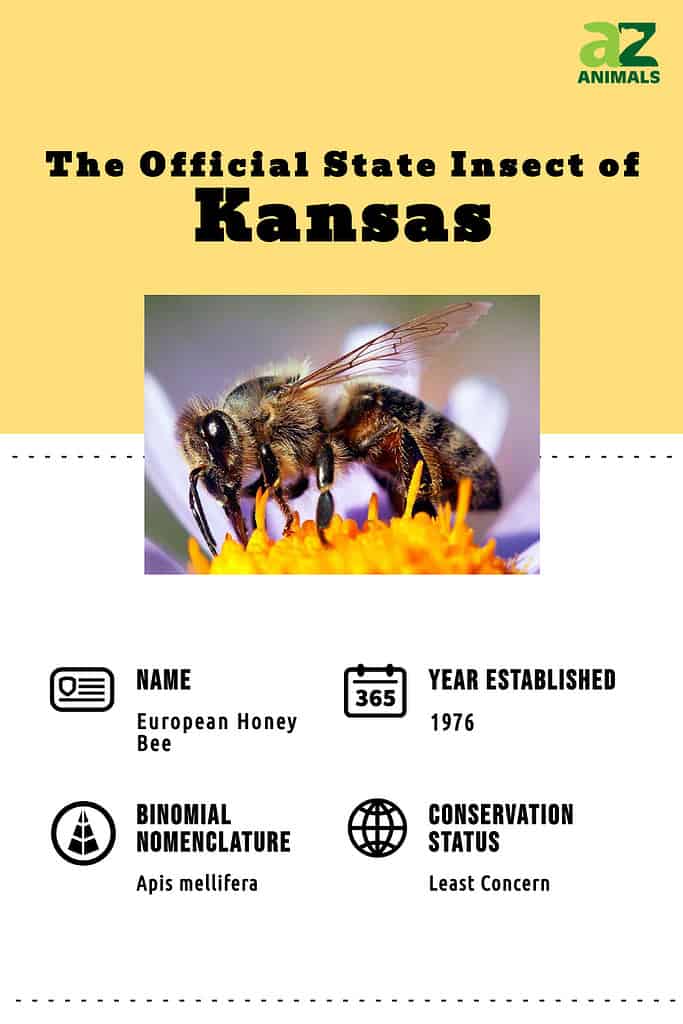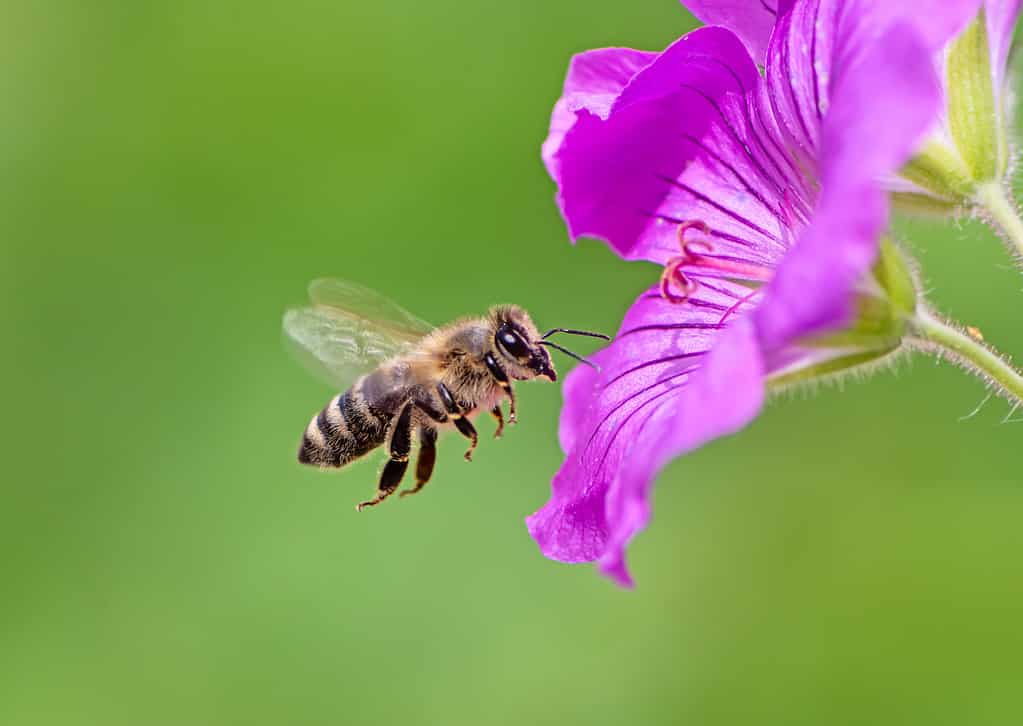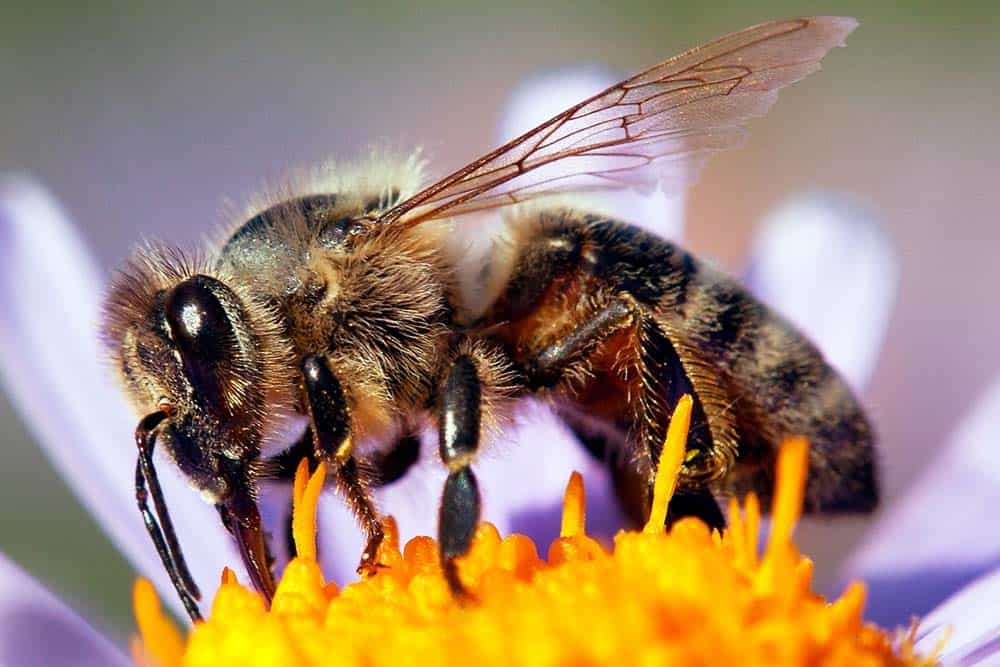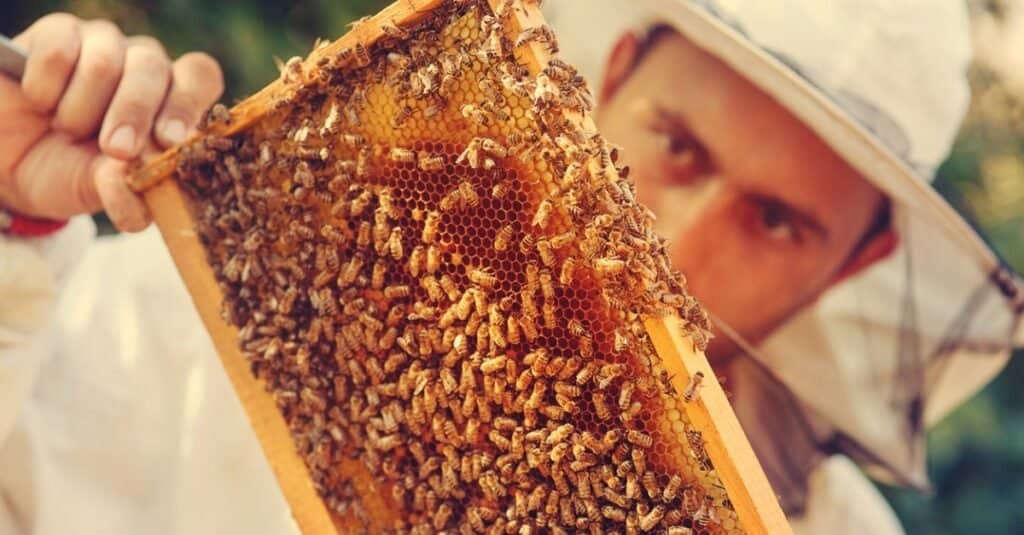State animals can be quite significant in that they tell us what types of fauna are prominent in the particular state. Many people are familiar with a state bird, but most states also have a state insect. If you’re checking out this article, you might want to know about the official Kansas state insect. The answer might surprise you. Keep reading to learn all about the official Kansas state insect!

What Is the Official Kansas State Insect?
The official Kansas state insect is the European honey bee.
There are a minimum of 20 recognized subspecies of this insect. The European honey bee naturally lives in Africa, the Middle East, and Europe. In the United States, the honey bee is referred to as the European honey bee. It is actually a hybrid between multiple interbreeding European subspecies.
The sex of the honey bee is determined on a haplo-diploid basis. All bees come from eggs. The unfertilized ones, with no father, develop into male bees or drones. Fertilized eggs develop into female bees. Whether these females grow to be worker bees or queen bees depends on their diet.
Most of the time, the queen bee is the only female in the colony that can reproduce. However, in some cases, worker bees can lay unfertilized eggs without a queen.
Throughout its life, the European honey bee undergoes a complete metamorphosis, going through the following stages: egg, larvae, pupa, and adult.

In the United States, the
honey bee
is referred to as the European honey bee. .
©iStock.com/manfredxy
Distribution and Range
As the name implies, the European honey bee is native to Europe. However, these bees have spread quite a bit beyond their natural range. Colonists introduced these bees to North America, South America, Australia, and Eastern Asia in the 17th century. European honey bees have natural populations on every continent, except for Antarctica.
These bees have been allowed to spread in the Americas due to the economic benefits they provide. They produce honey and pollinate flowers, which humans find useful.
Appearance

Worker bees have pollen baskets on each hind leg. These carry pollen back to the colony.
©Daniel Prudek/Shutterstock.com
European honey bees grow to be between 3/8- and 3/4-inch long. Depending on their status within the colony, their appearances can vary.
Worker bees have pollen baskets on each hind leg. These carry pollen back to the colony. They also have wax scales on their undersides, which they use to build the wax honeycomb. Each worker bee also has a barbed stinger that they lose when they sting a victim. Once the stinger is torn from its body, the worker bee dies.
Drone bees do not have stingers. They have larger heads and thoraxes than female bees. Drones also have larger and more bulging eyes. They have thick rounded abdomens, as opposed to the pointed ones that worker bees have. Even though they are larger, drones have smaller wings than worker bees.
Queen bees have heads and thoraxes similar in size to worker bees. Their abdomens, however, are plumper and longer. They have stingers like workers, but queen bee stingers have smaller barbs. A queen bee will not die if she stings a victim.
Diet
Adult bees feed on nectar and pollen. The worker bees collect these substances from flowering plants. Honey is concentrated nectar.
Honey bees also feed on secretions of aphids and other sap-feeding insects, as well as honeydew. It’s also common for bees to raid the hives of other colonies to get food.
Bees in the larval stage eat honey, nectar, and bodily secretions from worker bees. This jelly is either worker jelly or royal jelly; the type of jelly determines the status of the female when she reaches adulthood.
The female larvae that eat the standard diet of brood food, pollen, and nectar grow into worker bees. Female larvae that are fed a richer diet, with royal jelly instead of brood food, will grow to be queen bees.
Predators
The coloring of the bee, including yellow and dark brown bands, serve as a warning to predators to stay away. It deters any attacks on the bees themselves and on the entire hive and its contents.
However, there are some predators that will attack hives to try to get their honey. These include bears, skunks, gorillas, and honey badgers. There are other predators who will eat the bees themselves, including flycatcher birds, opossums, and toads.
Honey Bee Colonies

Honey bee colonies are superorganisms. It’s not the individual bees, but the entire colony, that is seen as the biological unit.
©iStock.com/djiledesign
In any given honey bee colony, there is a division of labor. The drone has the sole purpose of mating with a queen from another colony. The queen produces all the eggs for a colony – this can be up to 1,500 eggs per day. Worker bees maintain the colony, with specific tasks assigned based on the age of the worker.
Effective communication is crucial to the functioning of the honey bee colony. They communicate with each other using pheromones, produced by different glands within all types of bees.
Honey bee colonies are actually considered superorganisms. What this means is that it’s not the individual bees, but the entire colony, that is seen as the biological unit. In fact, honey bees reproduce on the level of the colony, not the individual bee. Swarming is the process of creating a new colony.
Economic Role
European honey bees are very important in the agricultural landscape of the United States. Pollination by honey bees is crucial in global food production. It plays a role in over 30% of food that people consume. In the United States alone, bees pollinate about $15 billion worth of crops annually.
Bees also create products that are useful to humans, including propolis, wax, pollen, honey, and royal jelly.
Beekeeping is very popular all over the world. Operations work on both commercial and individual scales. Commercial beekeepers may have more than 2,000 colonies in some cases.
The Langstroth hive is very popular in the United States. It is a makeshift hive with interchangeable boxes and removable frames that serve as combs. The features of this piece of equipment allow beekeepers to inspect the colony, treat any diseases or pest infestations, and collect honey without doing any damage to the colony.
The photo featured at the top of this post is © Maciej Olszewski/Shutterstock.com
Thank you for reading! Have some feedback for us? Contact the AZ Animals editorial team.





